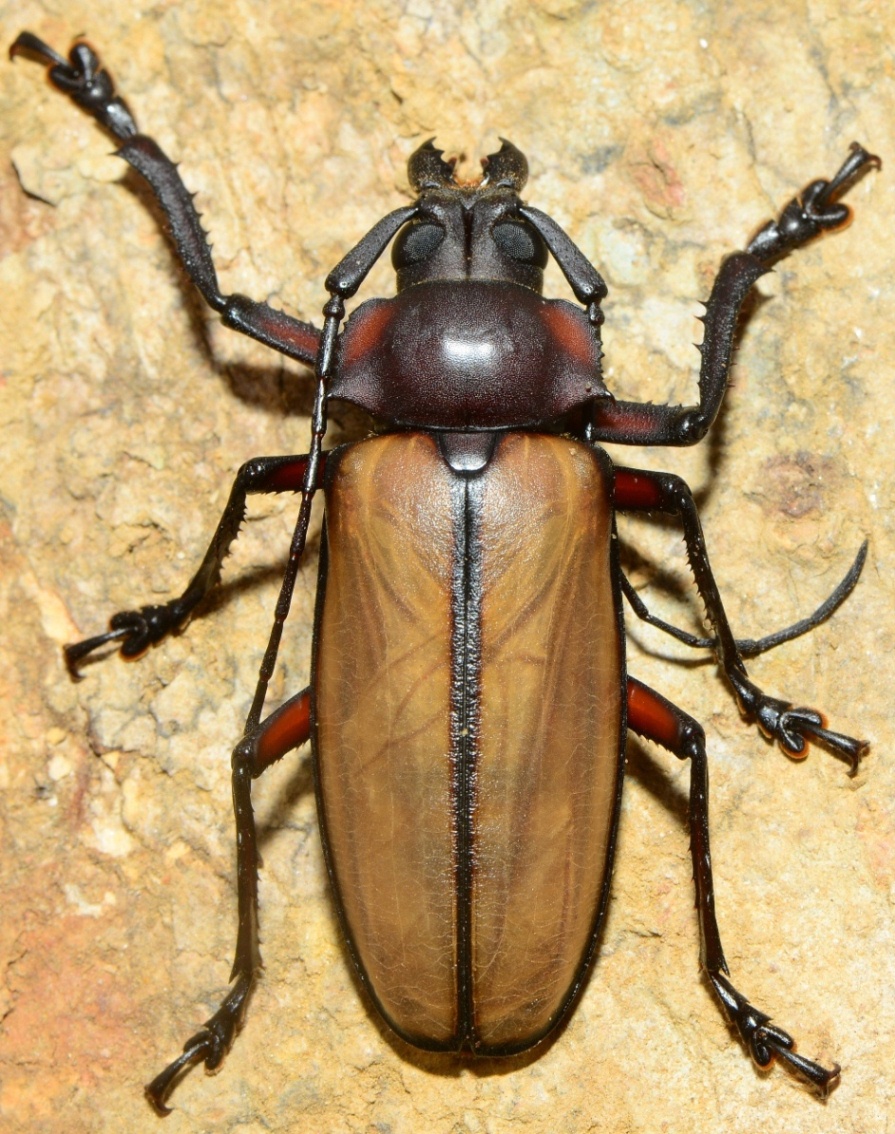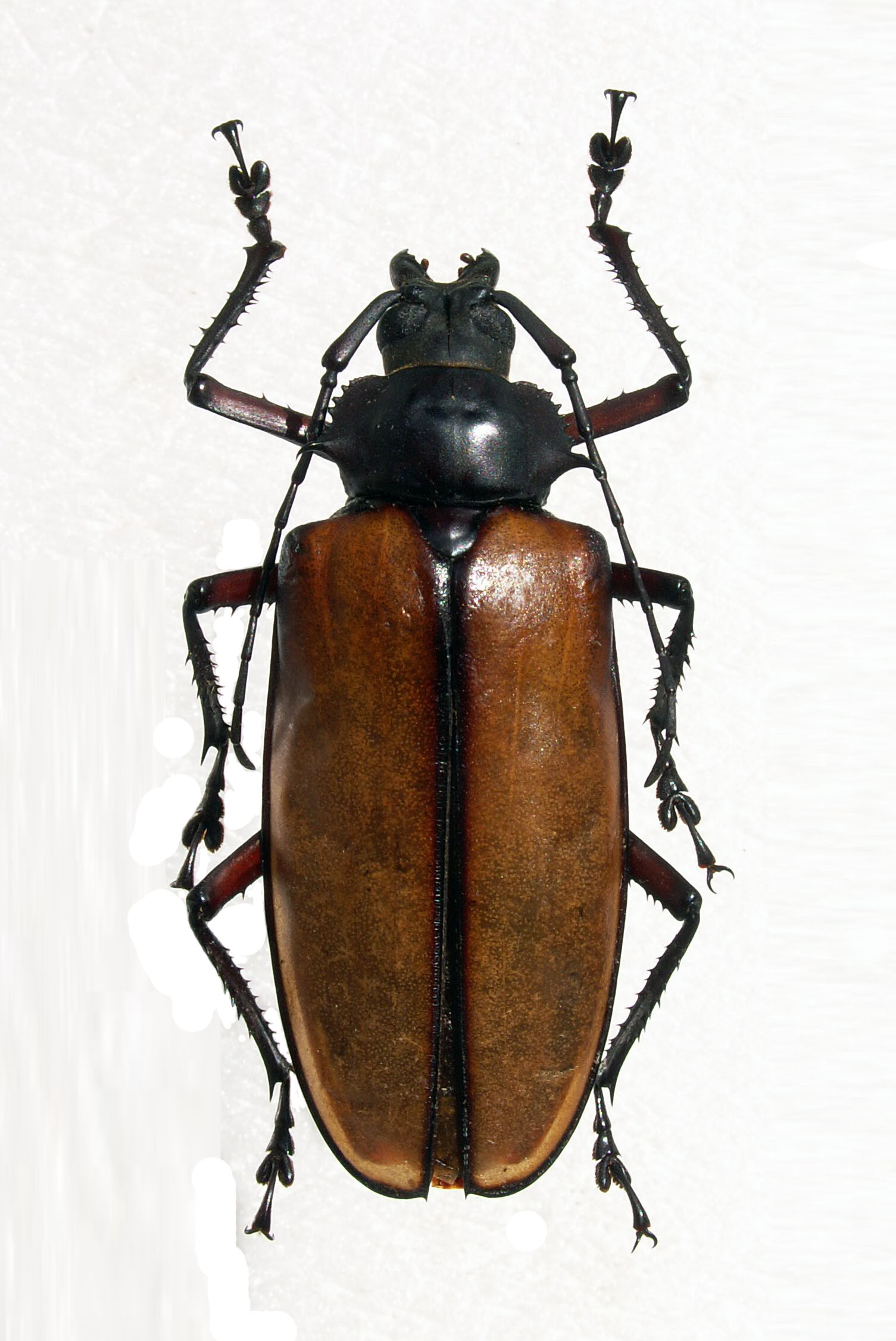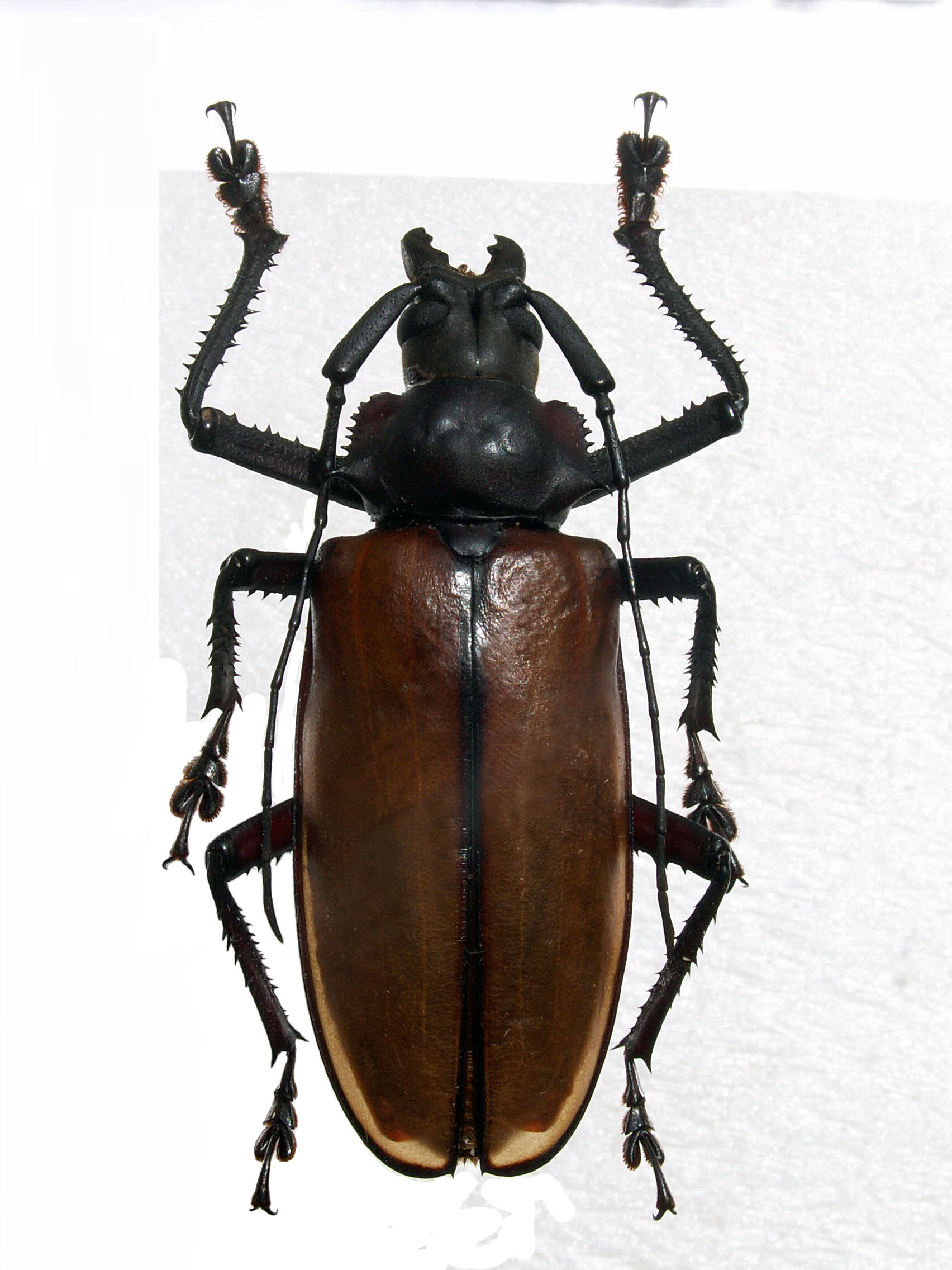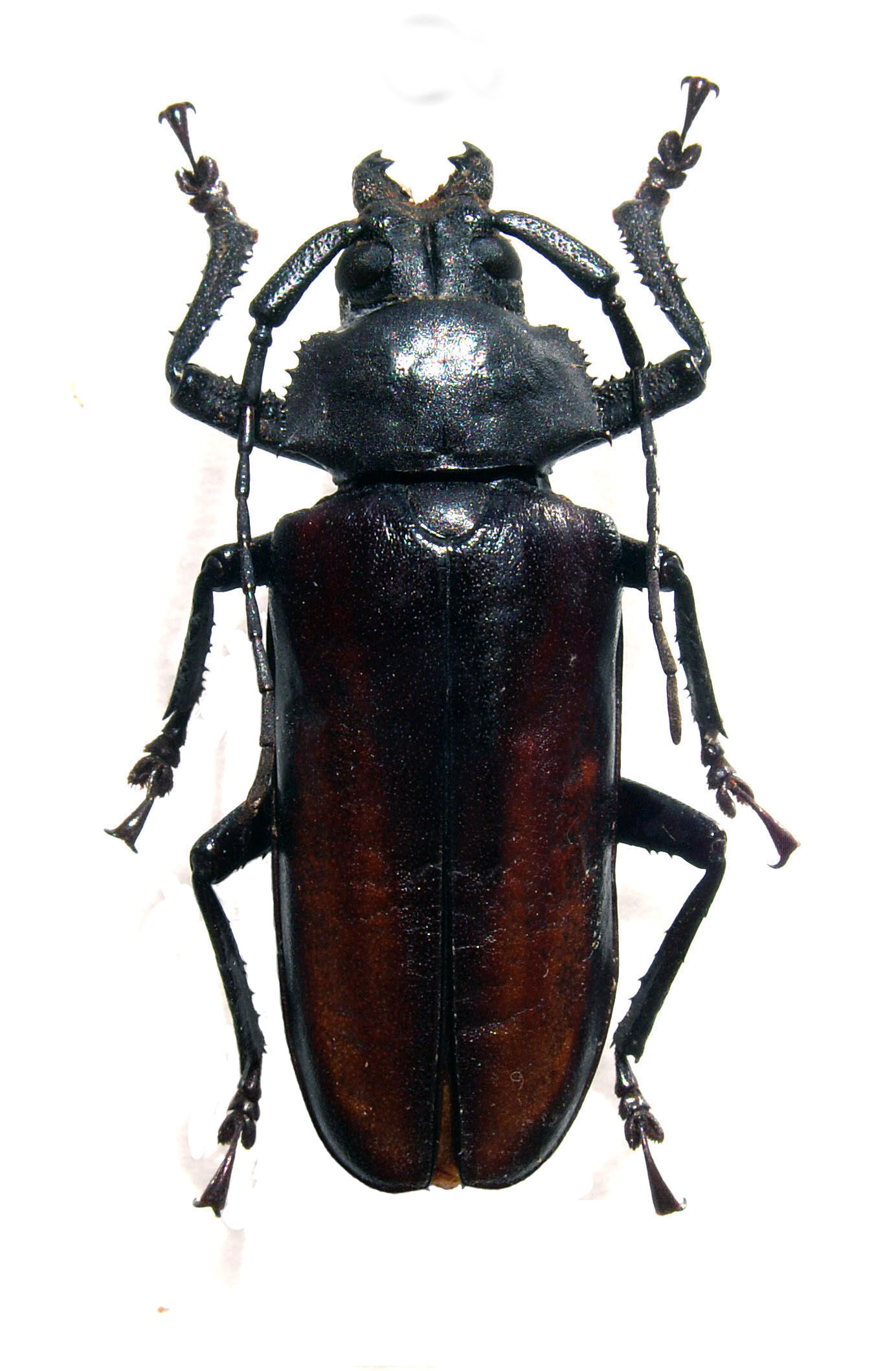| T O P I C R E V I E W |
| loongfah |
Posted - 22/04/2015 : 16:57:26
 
Malaysia, Perak
These 2 specimens look like they are of the same species |
| 5 L A T E S T R E P L I E S (Newest First) |
| Capitaine |
Posted - 23/04/2015 : 13:22:41
Thank you for the precisions Francesco,
But I think that the left one is a male (R. bonni) as you can see the difference with this female of the relevant couple.
Nevertheless, I've to check several specimens of these close species in coll.

367.09 KB
In addition, the specimen of R.suturalis shown in the Gallery meet the male of my specimen. |
| Francesco |
Posted - 23/04/2015 : 10:47:00
The first (at left) is a female of bonni, the second (at right) is a male of suturalis var. blumei.
The antennal length is very clear and was used by De Jong as well:

De Jong, 1936: 77
I think the differences of the pronotum can be used only for females.
In fact, according to De Jong, Lameere did not know the male of suturalis:

De Jong, 1936: 78 |
| Capitaine |
Posted - 23/04/2015 : 10:02:13
Ok Francesco, in that case what's about these two specimens here after?
The first is determined as R. suturalis from Cameron Highlands (Malaysia) and the second as R. bonni from Sumatra.
If you compare the antennae length and the prothorax width, we are at the opposite of Lameere description !(even if knowing the priones variability..)
  |
| Francesco |
Posted - 22/04/2015 : 19:53:25
According to Lameere (below) and de Jong (1936, here), R. suturalis is a species from Java characterised by very short antennae.

These specimens in BioLib correspond to its habitus.
In my opinion, this species is R. bonni (Nonfried, 1894)... though often shown or sold with a different name. |
| Capitaine |
Posted - 22/04/2015 : 18:34:00
2 males of Rhaphipodus suturalis (Audinet-Serville, 1832) |


